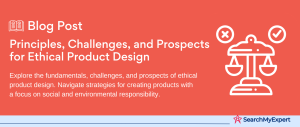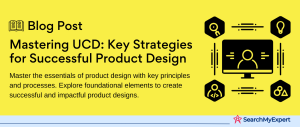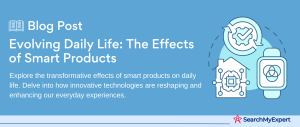Interactive Product Design
Problem & Context
Identifying the Target Audience
Who are you designing for? This is the cornerstone of any successful design project. Your target audience shapes every element of your design, from the user interface to the functionality. But how do you figure out who they are?
- Demographics and Psychographics: Start with basic demographics (age, gender, location, etc.) and delve into psychographics (interests, values, lifestyle).
- User Research:
Employ surveys, interviews, and observation to gather data. This insight reveals user needs, pain points, and expectations. - User Personas:
Create detailed personas representing different user segments. This helps in visualizing the users and making informed design decisions.
Setting Clear Goals and Objectives
What’s the end game of your design? You need clear, measurable objectives.
- Defining Success Metrics: What does success look like? Is it more sign-ups, higher engagement, or improved user satisfaction?
- Aligning Design with Goals:
Every design element should serve your objectives. For instance, if your goal is to increase sign-ups, your design should guide users effortlessly to the registration process. - Continuous Evaluation:
Set benchmarks and regularly evaluate if your design meets these goals. Adapt and evolve as needed.
Analyzing the Competitive Landscape
You’re not designing in a vacuum. Understanding the market landscape is critical.
- Research Existing Solutions:
What are your competitors doing? Analyze their strengths and weaknesses. - Gap Analysis:
Identify what’s missing in the current market offerings. This is your chance to innovate. - Differentiation Strategy:
Based on your research, how can your product stand out? It could be through unique features, superior usability, or groundbreaking technology.
Craft the Interaction Model
Mapping User Journeys
Navigating the User Experience:
Crafting an interaction model begins with understanding the user’s journey. It’s like mapping a complex network of roads; each path represents a different user scenario.
- Diverse Scenarios:
Consider various user scenarios, from the most common to the outliers. How does a first-time user navigate? What about a returning user? - Emotional Journey:
Factor in the emotional aspect. How do users feel at different stages? Frustrated, delighted, confused? - Visual Mapping: Use flowcharts or storyboards to visualize these journeys. This makes complex paths easier to understand and refine.
Defining Interaction Patterns
The ‘how’ of user interactions is pivotal.
- Core Interaction Methods: Are your users tapping on a screen, speaking commands, or using physical controls? The choice drastically shapes the user experience.
- Consistency is Key: Ensure that these interaction patterns are consistent across the product. This reduces the learning curve and enhances user comfort.
- Accessibility:
Cater to diverse user needs by incorporating accessible design principles. This broadens your product’s reach and usability.
Prototyping Low-Fidelity
Now, bring your ideas to life.
- Quick and Dirty: Low-fidelity prototypes are all about speed and flexibility. Use paper sketches, wireframes, or basic digital mockups.
- Iterative Process:
Test, gather feedback, and iterate. Early testing with real users can unveil invaluable insights and potential pitfalls. - Feedback Integration: Use the feedback to refine your interaction model continuously. This is a cyclic process of improvement.
Design the Interface and visuals
Information Architecture
Structure for Success: The backbone of any good interface is its information architecture. Think of it as building a library where every book is exactly where you expect it to be.
- User-Centric Organization:
Arrange content in a way that resonates with how users think and search. This could mean categorizing information based on user tasks, topics, or frequency of use. - Prioritization:
Highlight the most important information. What does your user need to see first? This could vary based on user personas. - Navigational Clarity:
Make navigation a breeze. Clear menus, logical paths, and intuitive categorization are key.
Visual Design
More Than Just Looks: Aesthetics meet functionality in visual design. It’s not just about looking good; it’s about creating an engaging and intuitive user experience.
- Consistent Aesthetic:
Your design should echo your brand’s voice and appeal to your target audience. Consistency in color scheme, typography, and imagery creates a cohesive experience. - Visual Hierarchy: Guide users through your design with visual cues. Use size, color, and layout to draw attention to key elements.
- Feedback and Interactivity: Visual elements should also indicate interactivity. Buttons should look like they can be pressed, links should be distinguishable, and feedback (like hover effects) adds to the usability.
Accessibility
Design for All:
Accessibility isn’t an afterthought; it’s a necessity. Your design should be usable by everyone, regardless of their abilities.
- Contrast and Color:
Ensure sufficient contrast between text and background. Avoid relying solely on color to convey information. - Readable Text: Choose fonts that are easy to read and size text for readability.
- Assistive Technologies:
Design keeping in mind screen readers and other assistive technologies. This includes alt text for images and navigable interfaces via keyboard.
Prototyping & User Testing
Developing High-Fidelity Prototypes
Turning Visions into Virtual Reality: High-fidelity prototypes bridge the gap between concept and product. They look and feel like the real deal.
- Realistic Interactions: These prototypes offer interactive elements, realistic animations, and full-scale functionality. They give users a true taste of the final product.
- Detail-Oriented:
Pay attention to details. The more accurate your prototype, the better the feedback you can collect. - Tools of the Trade: Utilize advanced prototyping tools to simulate real-world user experiences.
Conducting Usability Testing
Observing Real Users in Action:
Usability testing is the litmus test for your design. It reveals how real users interact with your product.
- Setting Up Tests:
Choose participants that represent your target audience. Prepare test scenarios that cover a range of tasks users would perform. - Observation and Note-Taking:
Watch how users navigate your prototype. Where do they struggle? What do they enjoy? Take meticulous notes. - Direct Feedback: Encourage participants to think aloud and provide honest feedback. This insight is invaluable for refining your design.
Iterate and Refine
A Cycle of Improvement: User feedback is the fuel for refinement.
- Incorporate Feedback: Use the feedback to make targeted improvements. Sometimes small tweaks can have a big impact.
- Iterative Process:
Design is never done. It’s an ongoing process of testing, learning, and evolving. - Final Polish:
With each iteration, your design should move closer to being user-friendly, intuitive, and delightful.
Motion & Microinteractions
Leveraging Animations and Transitions
The Power of Subtle Motion:
Animations and transitions are more than just eye candy; they’re functional tools that guide, inform, and delight users.
- Guidance:
Use motion to direct attention, leading users through tasks and highlighting important elements. - Feedback:
Animations can provide immediate feedback. For example, a button’s change in state after being clicked reassures users that their action was recognized. - Delightful Interactions:
Well-designed animations make the user experience more enjoyable. They add a layer of polish and sophistication to your design.
Designing Microinteractions
Small Gestures, Big Impact:
Microinteractions are tiny animations that occur in response to user actions. They’re the secret ingredient to a memorable user experience.
- Purposeful Animations:
Each micro interaction should serve a purpose, whether it’s providing feedback, indicating a state change, or simply delighting the user. - Subtlety is Key: Overdoing it can lead to distraction or annoyance. The best micro-interactions are those that feel natural and unobtrusive.
- Consistency: Ensure that these micro-interactions are consistent throughout your product. This creates a sense of familiarity and ease for the user.
Consider Technology & Development
Choosing the Right Development Tools
Matching Tools with Vision: Your design’s effectiveness is partly dependent on the technology used to build it. The right tools can bring your vision to life with precision and efficiency.
- Analyze Requirements:
Assess the complexity and functionality of your product. Does it require advanced animations, database interactions, or real-time capabilities? - Selecting Frameworks and Technologies:
Choose technologies that align with your requirements. Consider factors like scalability, security, and developer expertise. - Future-Proofing: Opt for technologies that are not just popular but have a strong community and future development prospects.
Working with Developers
Bridging Design and Code: Collaboration between designers and developers is crucial for a successful product.
- Effective Communication: Regularly discuss design intentions and constraints. Use tools like design handoff platforms to streamline this process.
- Understanding Limitations: Recognize the technical constraints and work together to find solutions that align with the design vision.
- Iterative Collaboration:
Engage in a cycle of feedback and refinement with the development team to ensure the design is faithfully and effectively implemented.
Accessibility Testing
Design for Everyone: Accessibility should be integrated into every stage of the development process.
- Adherence to Standards:
Regularly test your product against recognized accessibility standards like WCAG (Web Content Accessibility Guidelines). - Inclusive Testing: Involve users with diverse abilities in your testing process. Their feedback is invaluable in creating a universally accessible product.
- Continuous Improvement: Accessibility is an ongoing commitment. Keep updating and testing your product as standards and technologies evolve.
Launch & Continuous Improvement
Gathering Feedback and Iterating
Launch is Just the Beginning: Once your product is out in the world, the real work begins. Continuous improvement is key.
- Collect User Feedback:
Use surveys, user interviews, and feedback tools to gather insights from your users. - Data-Driven Improvements:
Analyze the feedback and use it to make informed improvements. Look for patterns and common issues. - Iterative Approach: Regularly update your product based on this feedback. This ensures that your product remains relevant and user-friendly.
Monitoring User Engagement
Understanding User Behavior:
User engagement metrics offer a window into how your product is being used.
- Track Key Metrics: Focus on metrics like daily active users, session duration, and user retention. These metrics provide valuable insights into user behavior.
- Identify Areas for Optimization:
Use analytics to pinpoint areas where users struggle or disengage. These are opportunities for improvement. - Adjust and Experiment:
Based on your findings, make adjustments. Sometimes even small changes can have a big impact on user engagement.
Embracing Experimentation
Innovation Never Stops: To keep your product fresh and engaging, you need to experiment.
- Test New Features: Introduce new functionalities based on user demand and market trends.
- A/B Testing: Use A/B testing to evaluate different versions of a feature or design. This helps in understanding what works best.
- Stay Agile: Be open to pivoting or introducing changes based on user feedback and market shifts. Flexibility is a strength in the fast-paced digital world.
Conclusion
The journey of designing a digital product is intricate and multi-faceted. From defining the problem and audience in the initial stages to crafting interaction models and visual designs, each step is crucial for creating a user-centered product. Prototyping and user testing refine the concept, while the incorporation of motion and micro interactions adds depth and engagement. Considering technology and development ensures practical implementation, and the launch marks the beginning of an ongoing process of feedback, iteration, and experimentation. Embracing these steps with diligence and creativity leads to a product that not only meets user needs but also stands out in the competitive digital landscape.
Transform your ideas into market leaders with top Product Design Companies.
Table of Contents
Toggle






